A trip to southern India should definitely include a visit to the backwaters of Kerala, in Alleppey (or Alappuzha), an extensive network of rivers and canals used as an efficient means of transport, and at the same time a whole way of life.
There are several options for navigating the waters of this 900km labyrinth, from small boats with capacity for just a few people, moved by sinewy rowers, to enormous vessels that take short cruises.
Although it is true that as a city it does not have much to offer, Alleppey (or Alappuzha) is the starting point for these journeys to most tourists who come to Kerala eager to experience this way of living practically floating.
Exploring the surrounding area and rice fields will make you want to stay for a few days.
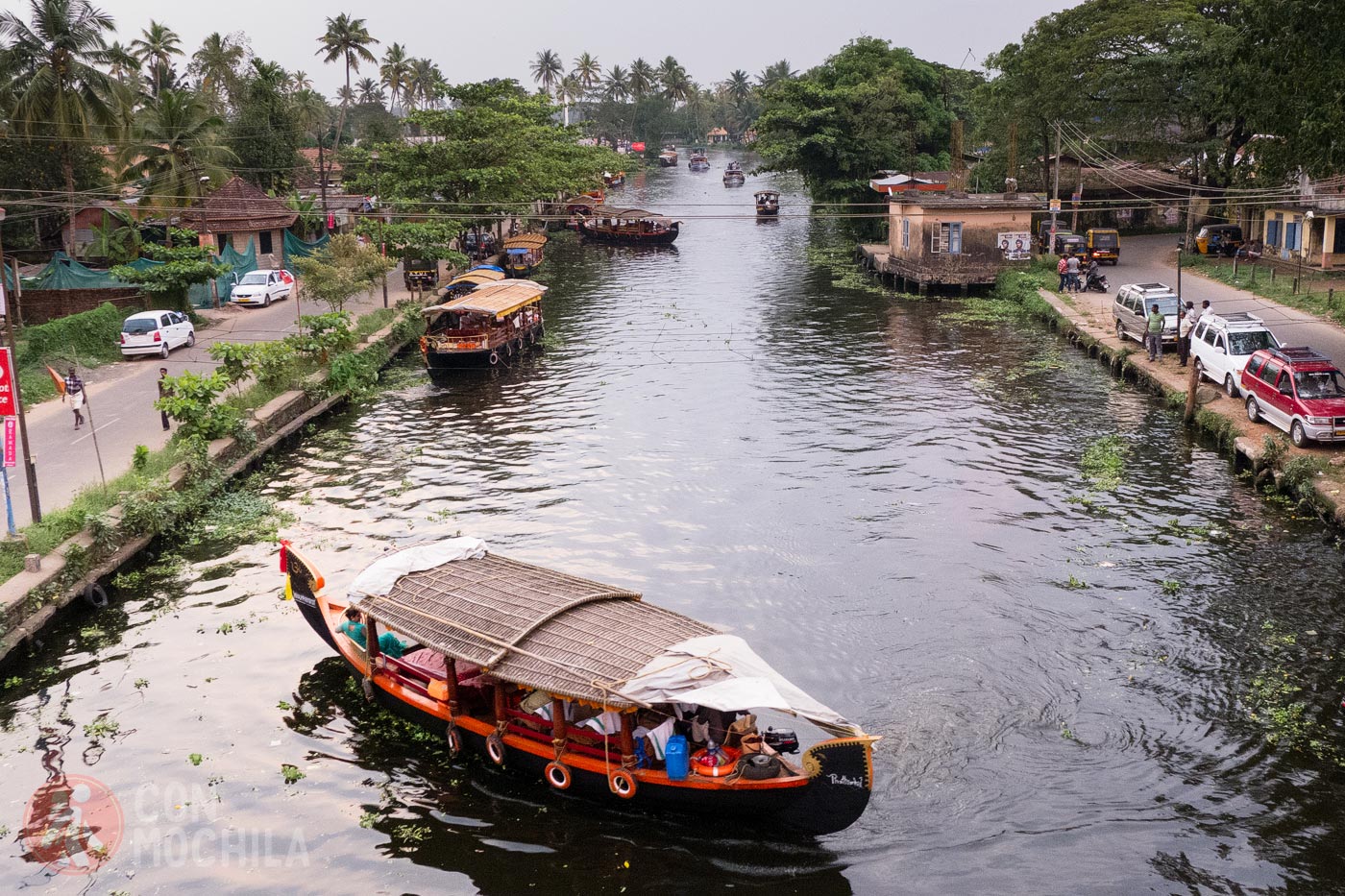
Enjoy the wildlife and tranquility of the network of canals and lakes that stretch along the Kerala coast. There are many options to experience this region, from taking a ride on one of the traditional boats to paddling in your own kayak.
Alleppey is located in Kerala, in the south of India, so its climate is tropical, with high temperatures and a significant average of humidity that is experienced almost without variation throughout the year. Below we tell you what its three main seasons are, so you can organize your trip in the best possible way:
We know that the subject of visas can be somewhat confusing, especially for India, where obtaining one is an essential requirement for entry. In the article on how to obtain an Indian visa step by step (coming soon) you have information on how to apply for one online for up to 5 years.
It’s essential to travel to India with comprehensive insurance. We were among the first to offer the popular IATI discount, and you can now get it with Heymondo Travel Insurance as well.
You can find more information about both companies through the links provided above, or you can access the discount directly using the buttons below (in both cases, you’ll see the reduced final price on their website):
While many hotels, guesthouses, and restaurants in India offer free Wi-Fi, some travelers prefer or need a constant connection. We’ve included details on obtaining a eSIM India card with unlimited data (from Holafly) or with fixed data but cheaper (from Saily).
If you want to get it directly, here’s the link (with a discount) for both companies:
As in many other cities in India, the train is one of the best options. There are connections from nearby cities such as Cochin, Thiruvananthapuram, and from major cities in India such as Delhi, Mumbai or Kolkata. You can also buy a train ticket in one of the sleeper classes (3rd class).
The roads in this district are fairly well connected. To reach Alleppey (Alappuzha), there are various buses that arrive from Cochin, Chennai, Bangalore, or Varkala, among others, some of them making the night journey.
The nearest international airport is Cochin (Kochi), about 90 minutes from Alleppey by road. The normal route is to fly to Cochin city and then to Alleppey.
Something you can’t miss in southern India are the famous water channels, the Kerala backwaters. We ended up opting for a small boat and a day trip to visit the less crowded areas, such as very narrow channels where the silence was almost absolute and the palm trees protected us from the powerful rays of the sun.
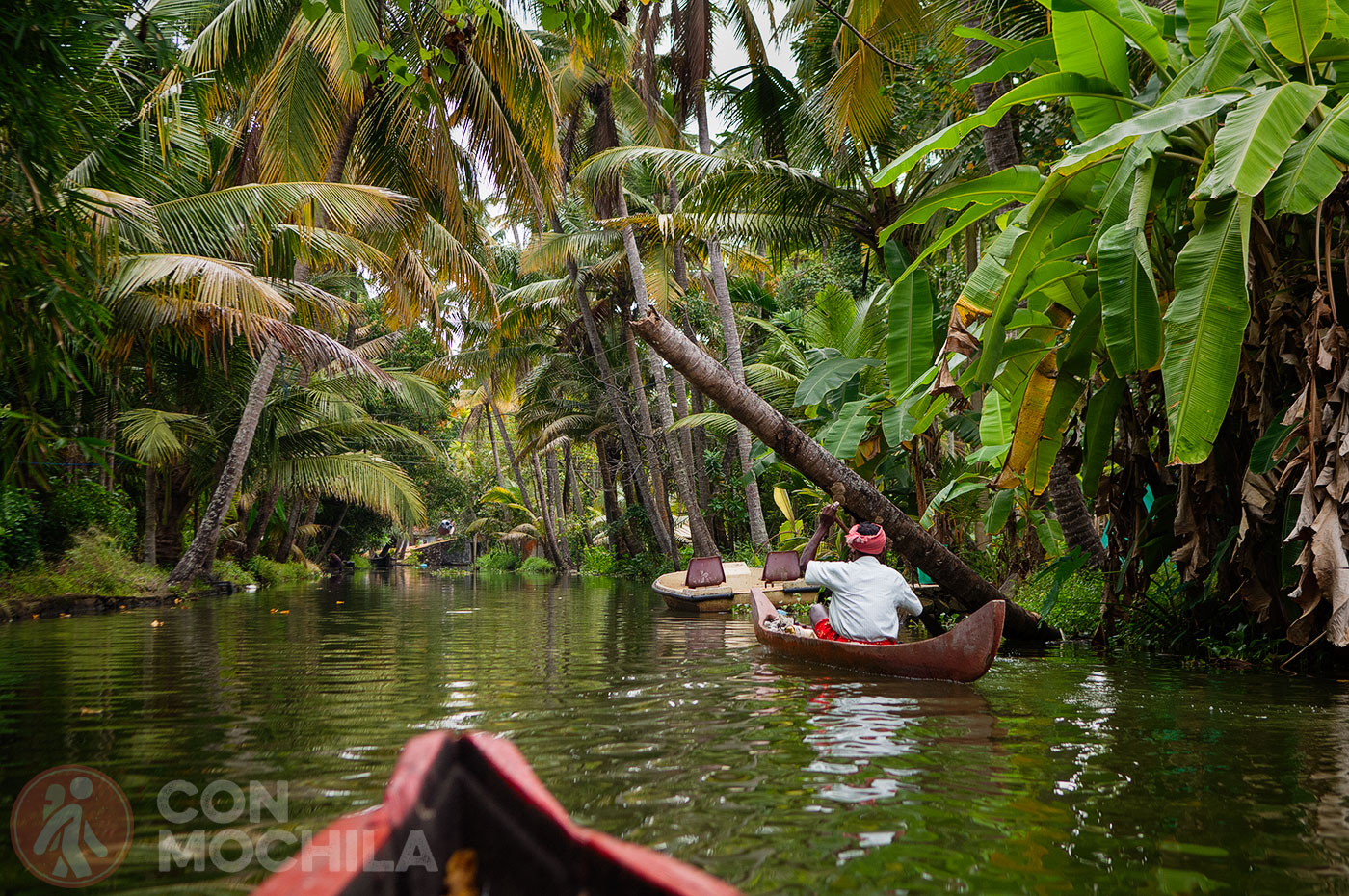
We were able to see local people working in the rice fields or showering in the river, and we even made a few stops in small villages.
Vembanad Lake is said to be the longest and widest lake in India, as it comprises several districts within the state of Kerala. The heart of the famous Kerala backwaters, it is famous for its emerald waters, the result of the palm and coconut trees that line its shores.
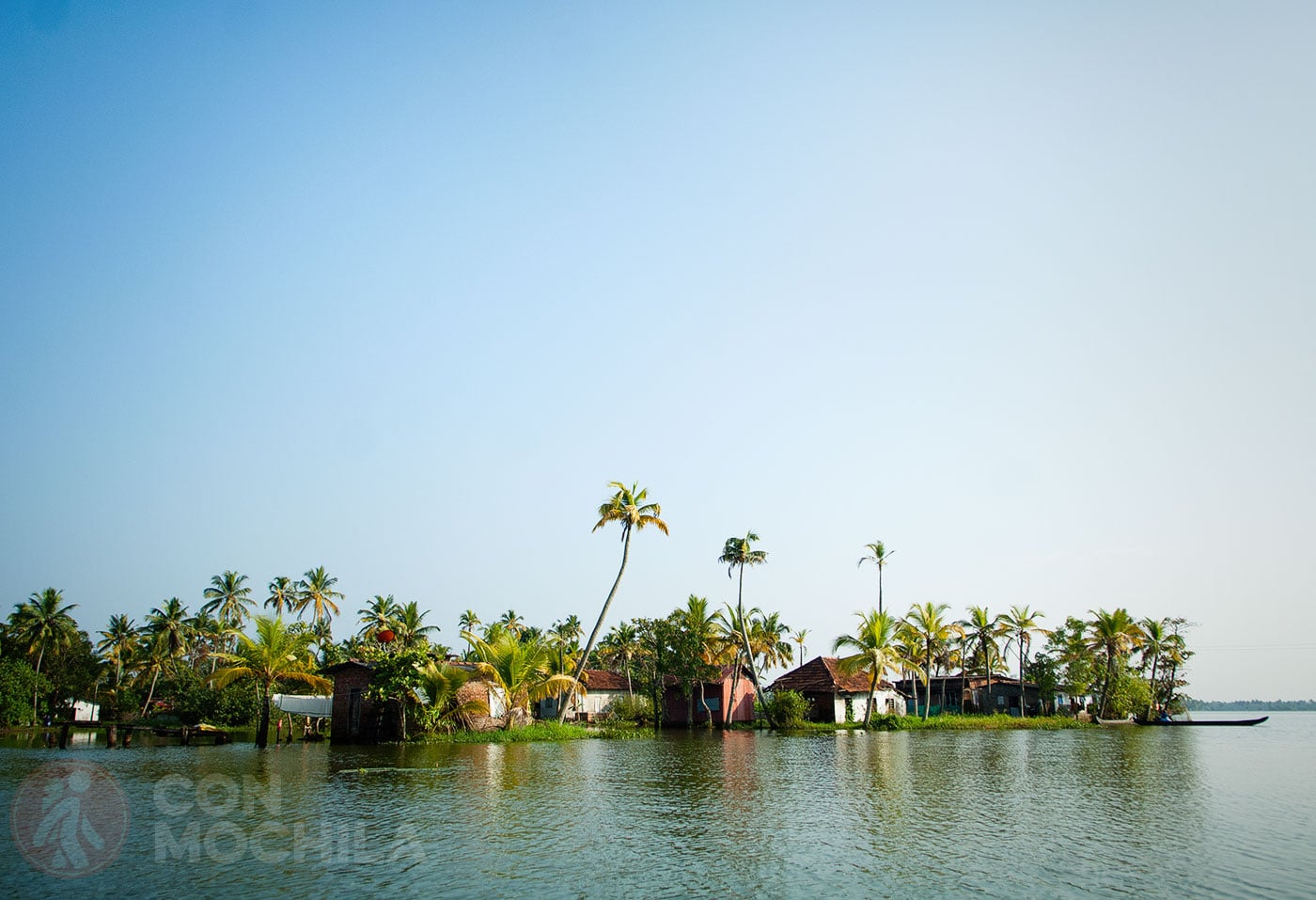
The peaceful atmosphere it conveys is perfect for getting on a boat and touring some of its islands, visiting bird sanctuaries or plantations, or seeing how fishing is still done in a traditional way.
This white sand beach surrounded by coconut trees is the most touristic in the whole city.
The pier at Alappuzha Beach has been going out into the sea for over 150 years and is part of the landscape, along with the Alappuzha Lighthouse, which was built in 1862, during one of the busiest periods of maritime activity in Alleppey.
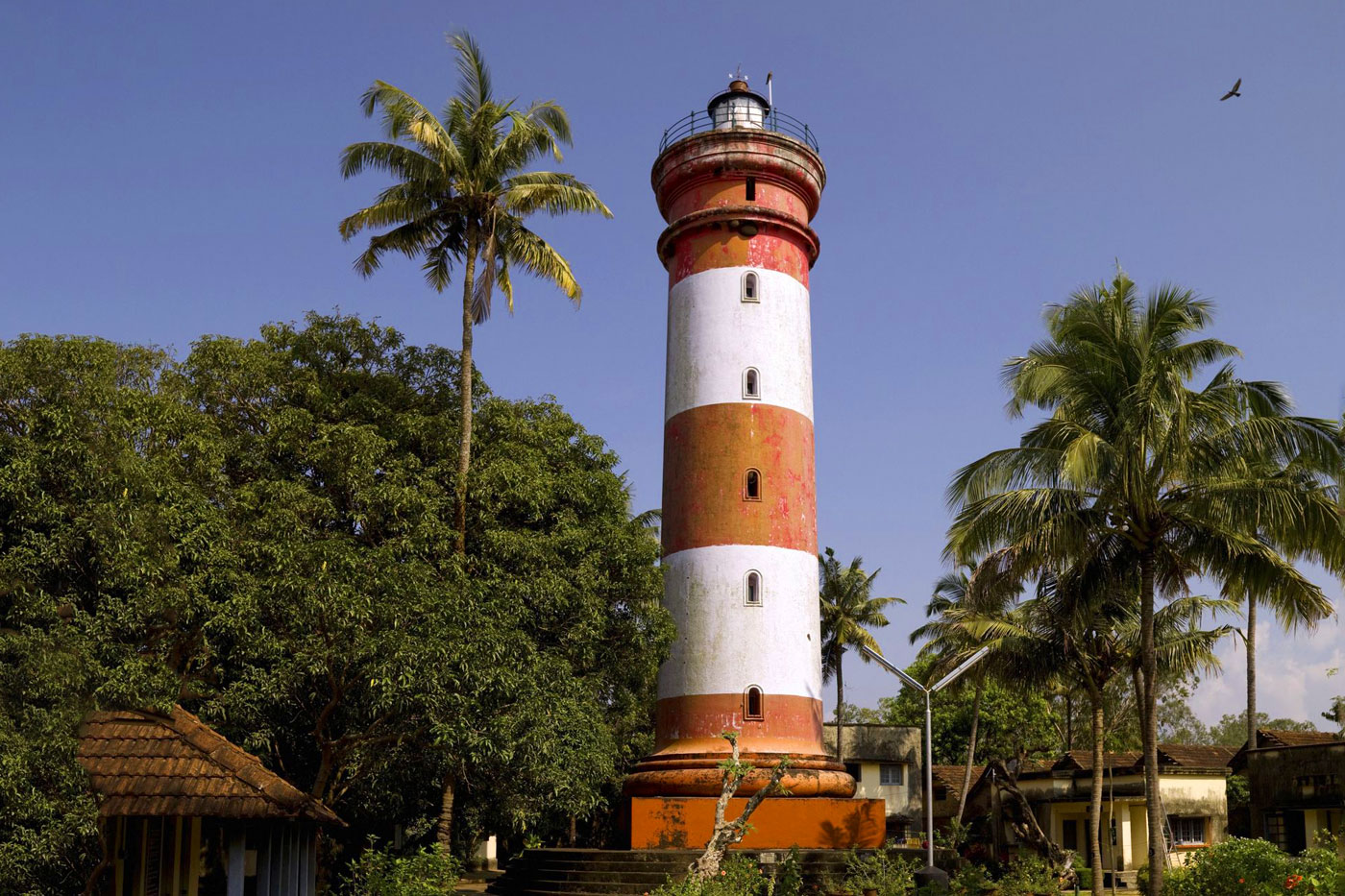
Today, it can be visited, and offers good views of the beach, the sea and some nearby fields.
About 11 km from Alleppey we find Marari Beach, a kind of paradise of white sand surrounded by coconut trees and mangroves.
Marari comes from Mararikulam, a small fishing village located in the Arabian Sea, where peace and quiet are part of the landscape along with the fishermen who go out every morning in their boats.
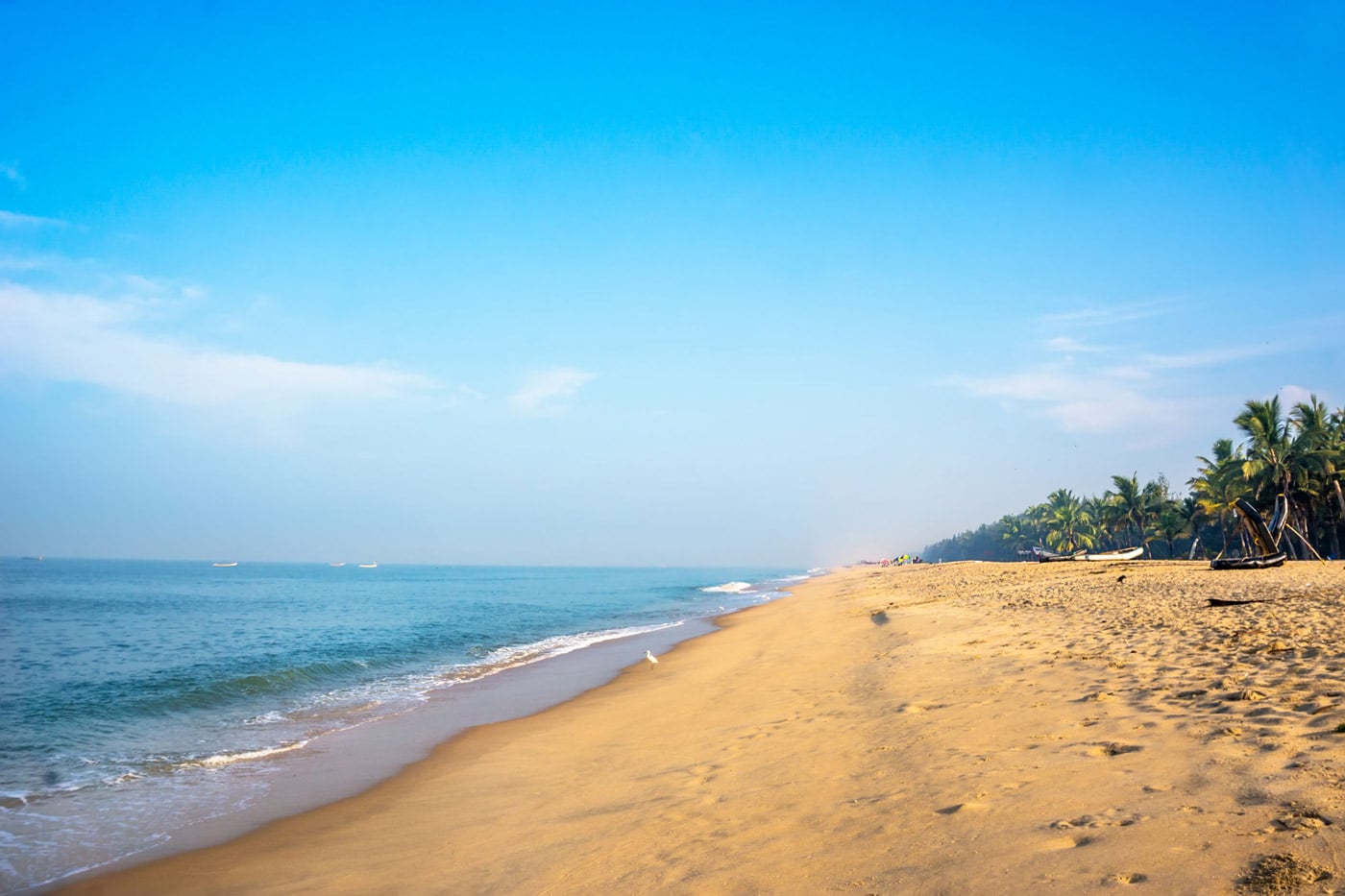
There isn’t much infrastructure on this beach, just a few bars, and you definitely won’t find many tourists.
Described by some travelers as one of the most beautiful in Kerala, the Mount Carmel Cathedral in Champakulam is striking for its white color and the tranquility that surrounds it (yes, this is the general tone in the Kerala area).
It is located in Champakulam and is usually one of the obligatory stops when you stay in one of the houseboats.
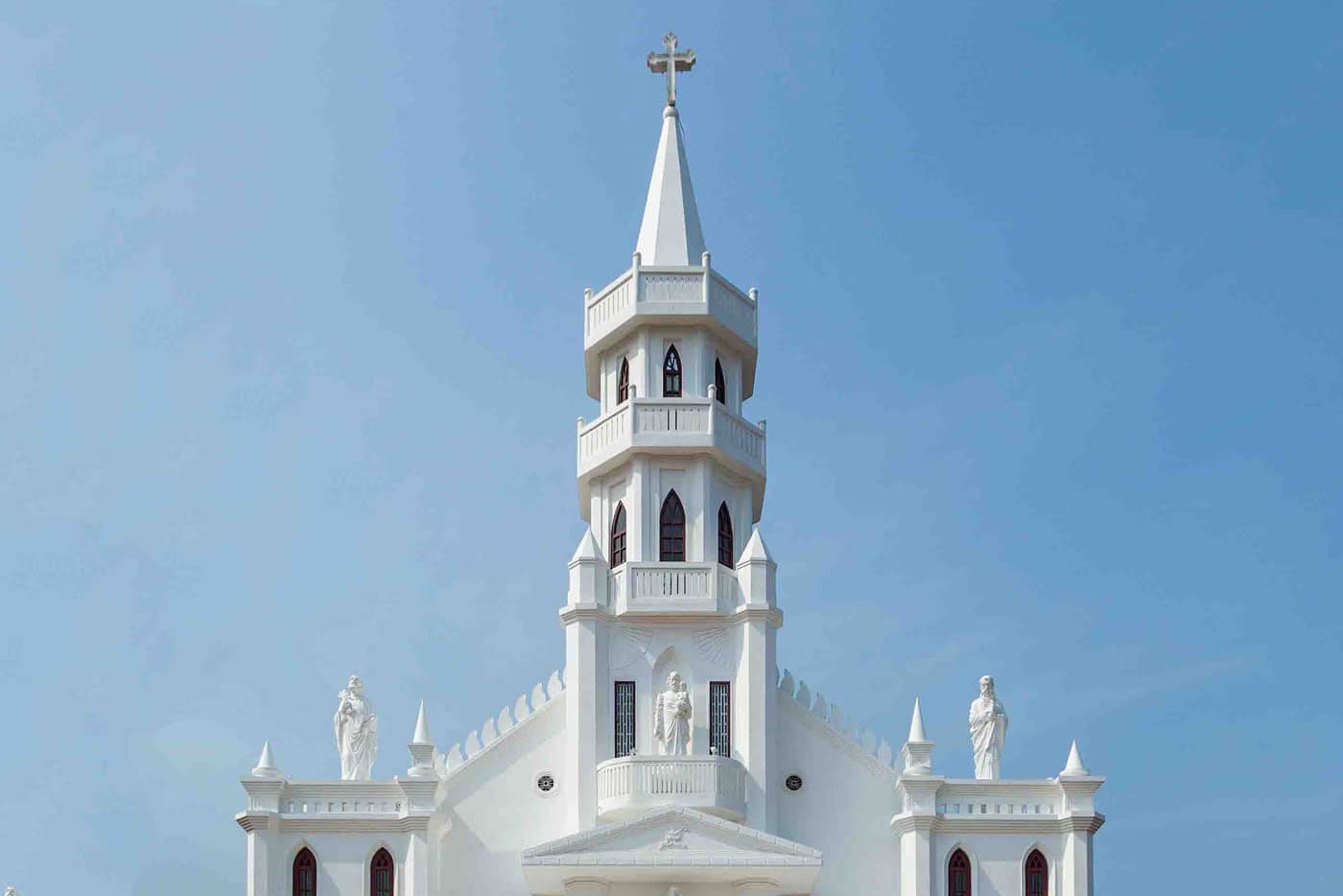
The church and its interior frescoes are in good condition and have a very characteristic architectural style.
One of the most important temples that has contributed to the growth of Jainism in South India is the Shri Jain Shwetambar Temple in Alleppey.
It was built in white marble brought from Rajasthan, and has undergone numerous modifications over time, although it still maintains the grandeur of this type of temple.
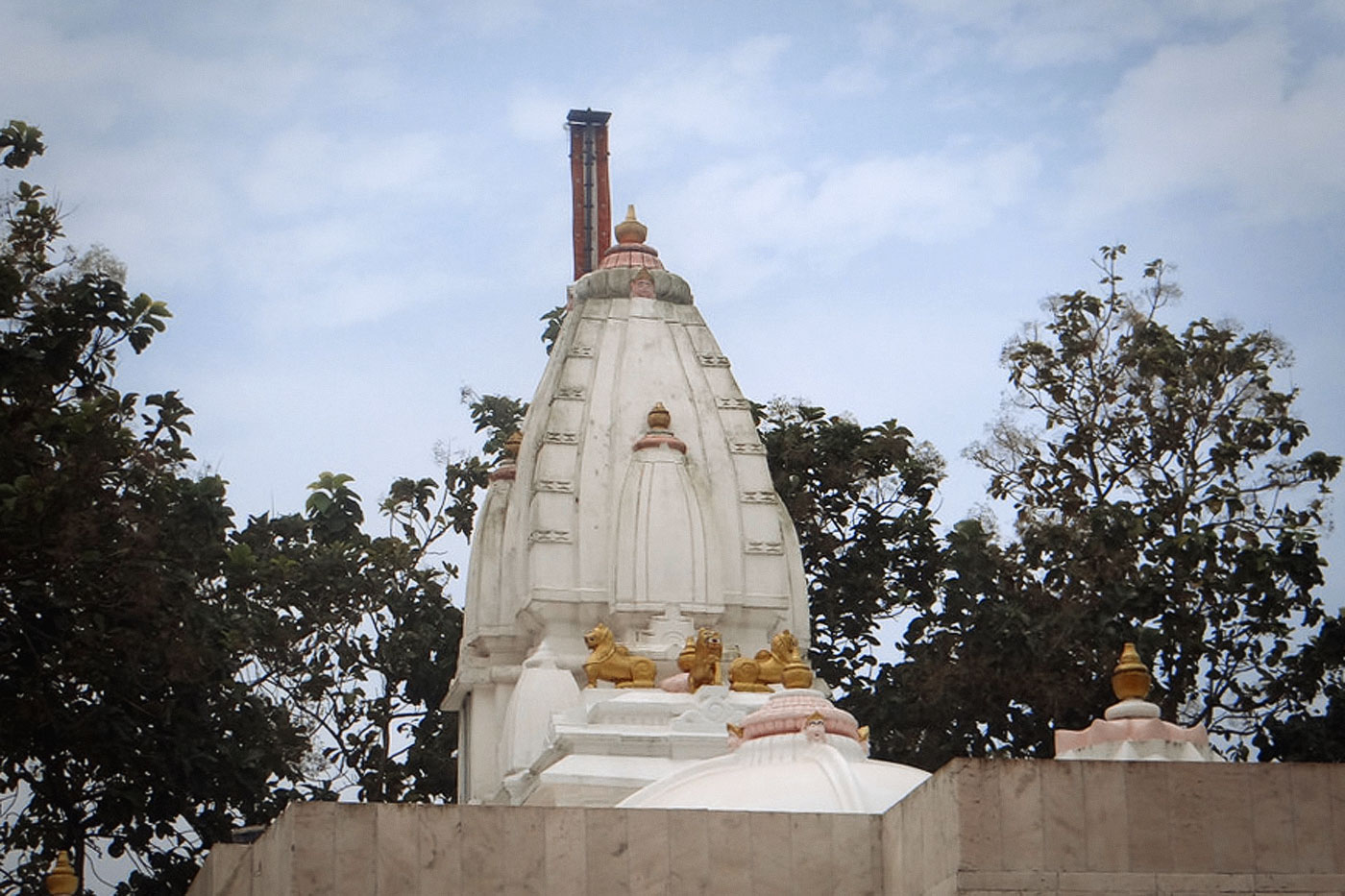
A handful of devout Jain families are responsible for its management and maintenance, while also maintaining the precepts of Jainism.
Punnamada Lake is the part of Vembanad Lake located in the Kuttanad area. This area, known for its rice fields, with areas reclaimed from Vembanad Lake, is called the Rice Bowl of Kerala. Apart from the beauty of the coconut trees, we can see small boats ferrying locals.

Every year since 1952, a boat race called Nehru Trophy is held, in which rowers from the surrounding villages participate, and is followed by all the inhabitants of the area.
The Mullakkal temple is notable for being a multi-faith place of worship, and although the main deity is the goddess Rajarajeswari, we will find different deities such as Nagaraja, Ganesha, Hanuman Swami and Sree Krishna, among others.
People of all castes and beliefs can enter here, something that is not always common in India.
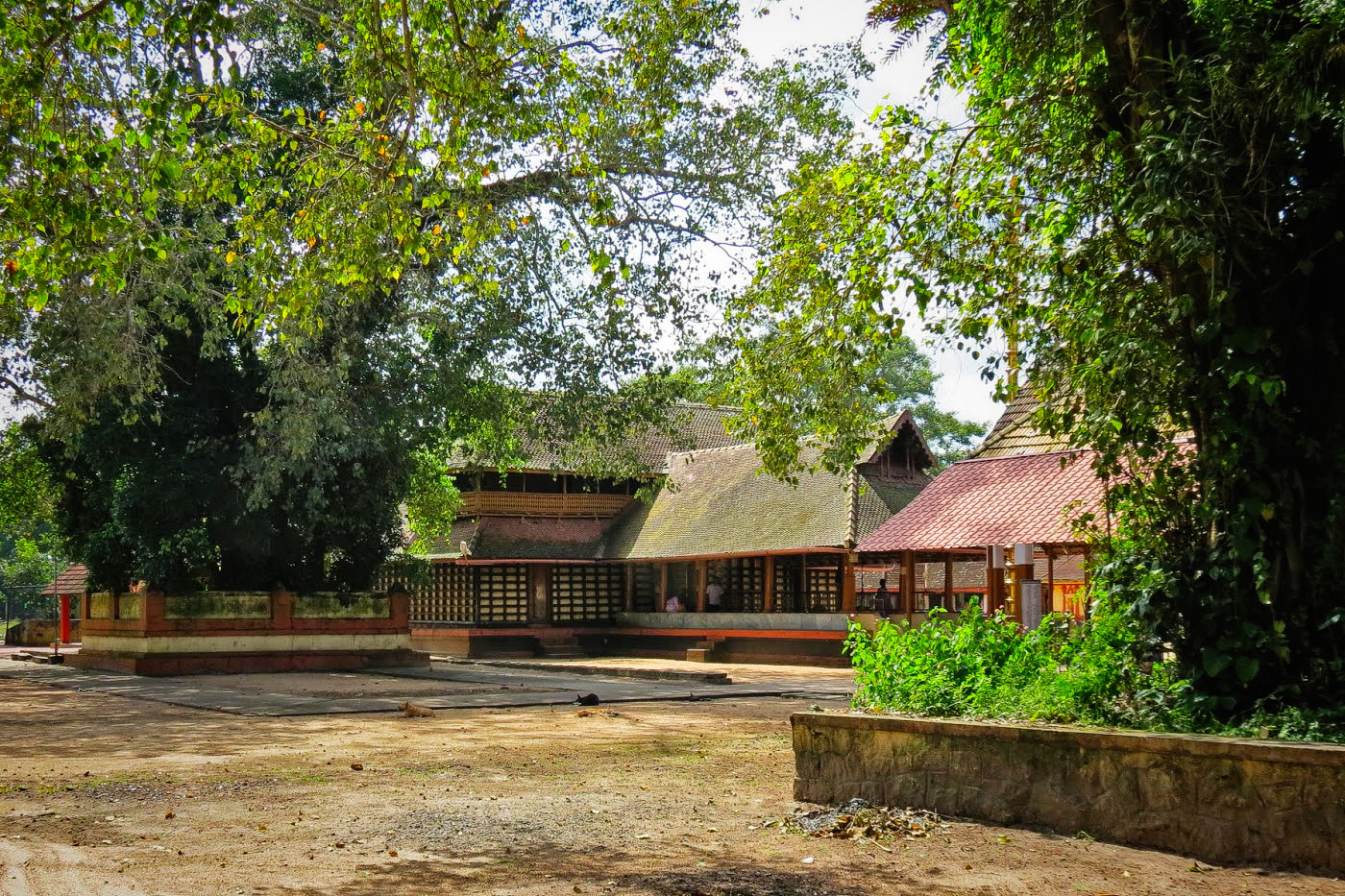
Although there are different theories about its foundation, it is believed to have been built almost 500 years ago.
If you like bird watching, you will find Pathiramanal Island a paradise. You can reach it, about 13 km from Alleppey, by boat or by one of the houseboats from Muhamma.
The island, about 500m long, is inhabited only by birds, about 90 local species as well as a large number of migratory birds that travel from different parts of the world, from ducks, seagulls or cormorants to herons and kingfishers.
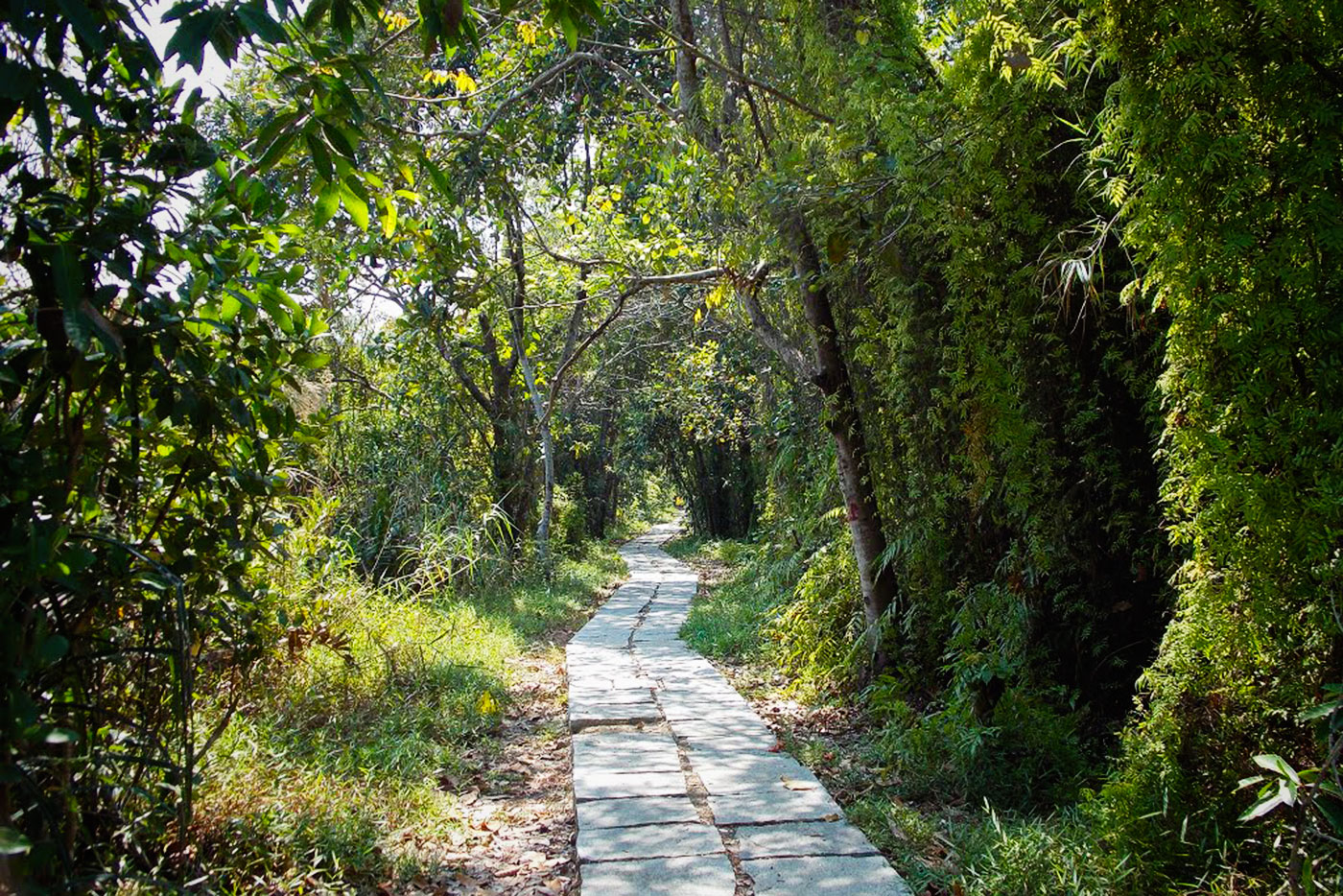
In addition, it is very rich in plants, aquatic fauna, butterflies, fish, snakes and insects.
Built in the typical style of Kerala architecture between the 15th and 17th centuries, the temple in question, the Ambalappuzha Sree Krishna Temple, is known throughout India for the daily offerings of sweet milk pudding and rice made by the faithful.
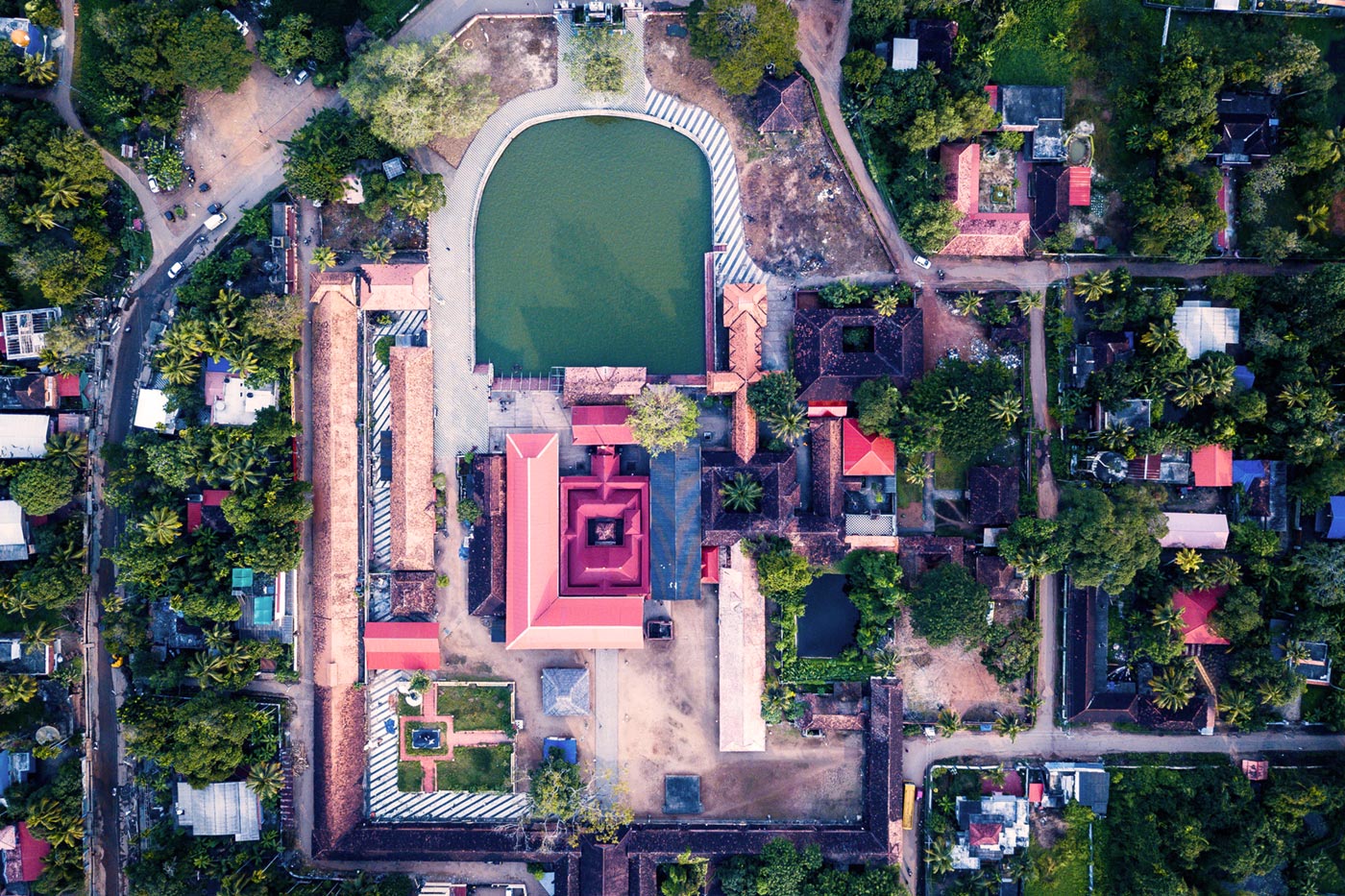
It is dedicated to Krishna, and a black granite figure of Parthasarathi, the main idol of the temple. Outside, there are steps leading to the water so that the faithful can wash themselves.
Kuttanad is a region within the Alappuzha district, known as the Rice Bowl of Kerala for its numerous paddy fields.
A walk through these fields allows us to see the way of life of the inhabitants of this region: men and women harvesting rice and transporting bales of the grain.
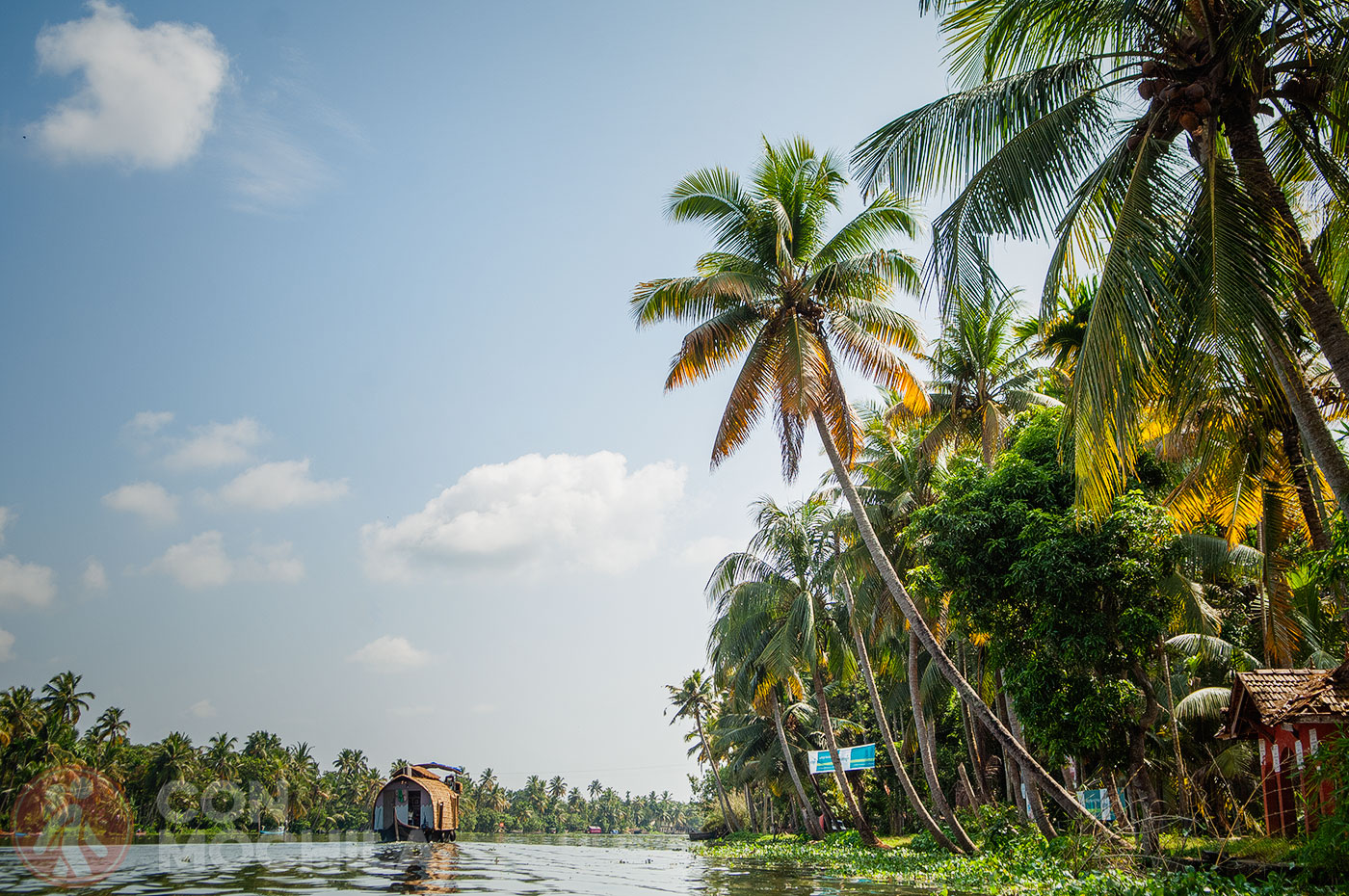
Many of the boat and houseboat tours take visitors through this area, where, in addition to seeing the rice fields, we can observe birds near the backwaters.
Karumadi Kuttan is the name given to a statue of Buddha found in this small village near Alleppey. The granite statue is said to date back to before the 14th century and was found by Sir Robert Bristow, an English engineer, in the 1930s.
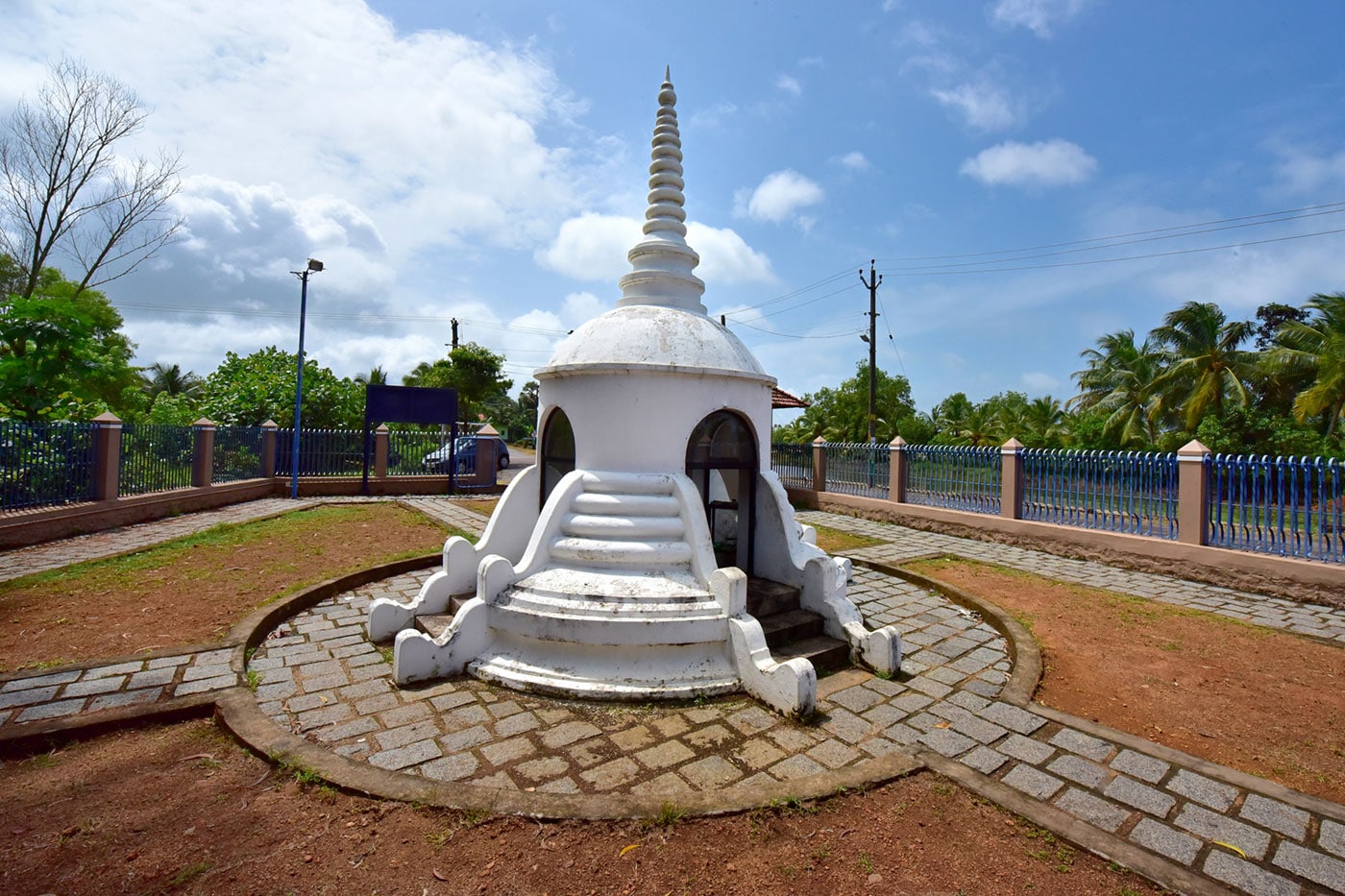
Since then, it has been protected and is the subject of various studies that try to find out what happened to the missing half of the statue. It is also visited by pilgrims who say it has healing powers.
This ancient Syrian Catholic church is located in Champakulam and is said to date back to 427, though it has been rebuilt many times. It is said that St. Mary’s Basilica was under the management of Niranam Church, which was founded by St. Thomas the Apostle himself.
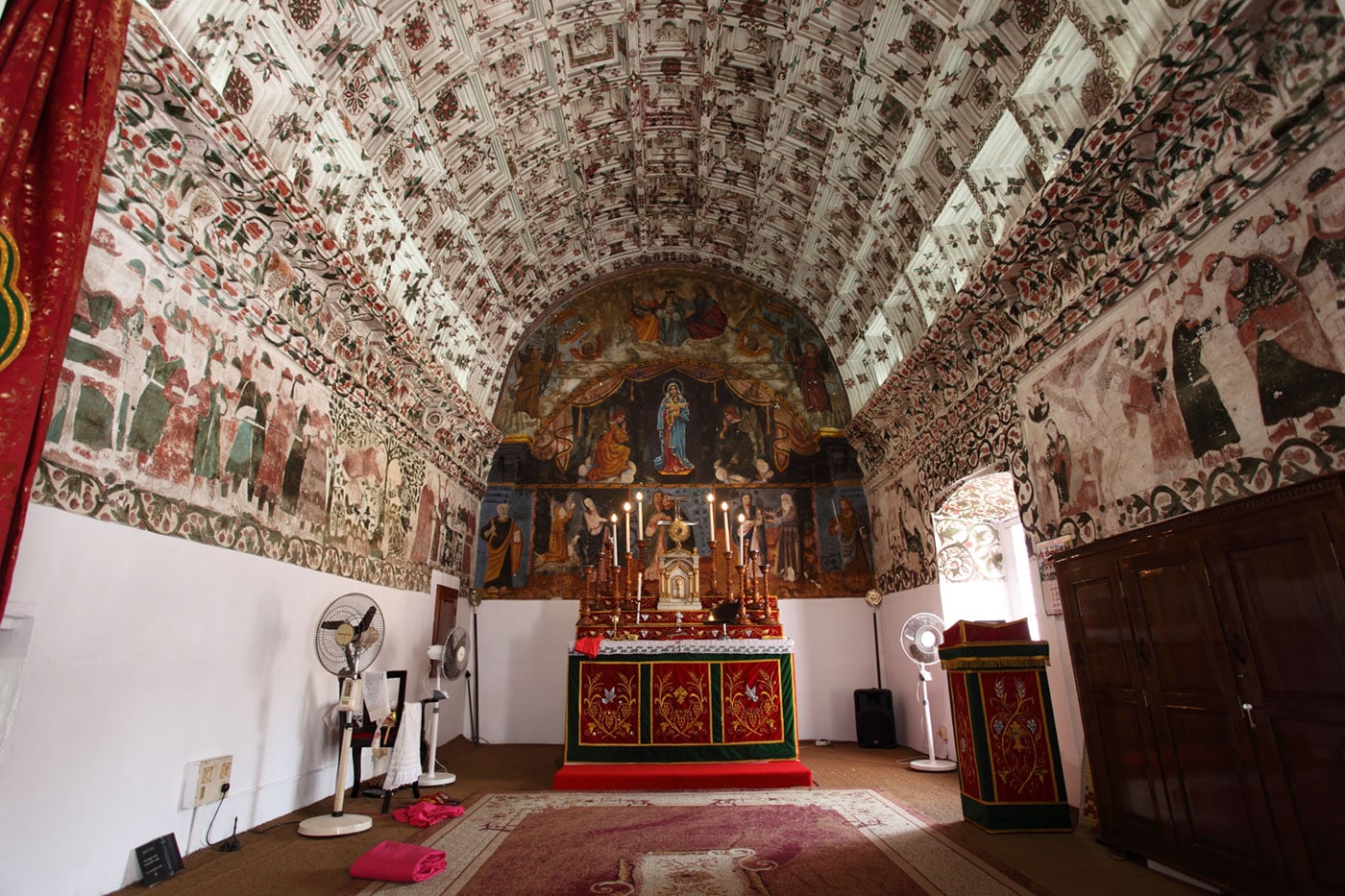
Its striking exterior, built entirely in white, combines Portuguese and Syrian architectural styles, and is part of India’s Christian heritage.
The Mannarasala Sree Nagaraja Temple at Haripad, very close to Alleppey, is widely visited and known by the followers of Nagaraja, king of Nagas, or serpent god.
The creator of Kerala, Parasurama, left instructions to the followers of Naga, so that they should avoid causing harm to snakes and protect their environment instead.
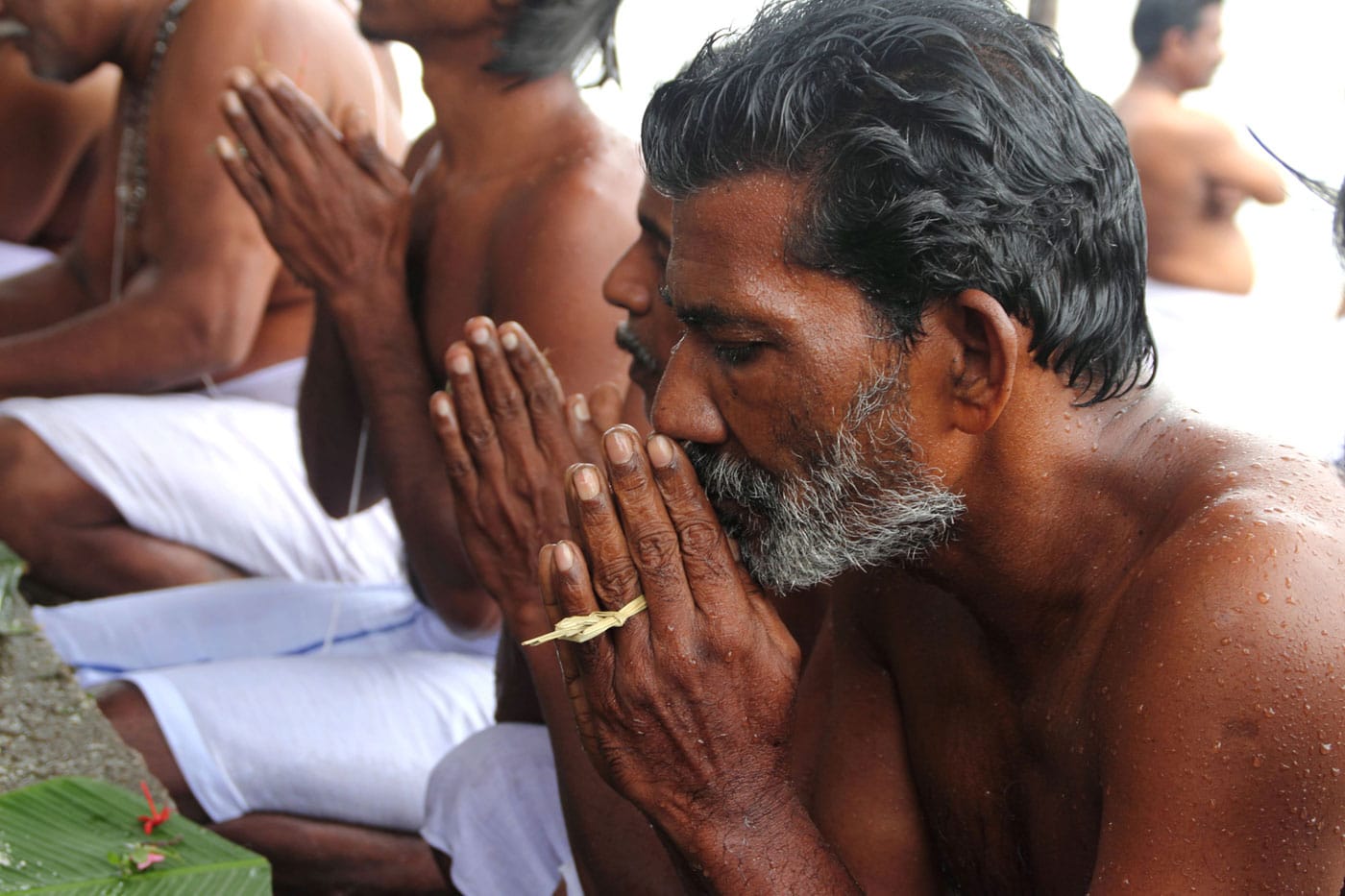
Unlike other temples, some of the rituals are carried out by women, and legend has it that the first priestess of this temple gave birth to a 5-headed snake.
If you’re traveling through India and you end up in Alleppey, you can’t miss the experience of getting on one of its large wooden canoes to explore its famous canals.
We recommend this half-day excursion along the canals of Alleppey, where the guide will tell you more about the life of the canals’ inhabitants and the local fauna.
Are you more into active tourism and earning a good lunch after paddling? Try this kayaking excursion paddling through the Kerala Backwaters of Alleppey. About 5 hours in total to discover local traditions, fauna and flora, and finish with a delicious lunch.
We have two ideas for you to have a good time during your visit to Alleppey. On the one hand, you know that our philosophy is to always try the local food, so we recommend a cooking class in Alleppey preparing over 6 local dishes. Here you can taste the typical dessert of the area, the Kerala halwa.
Our second suggestion is a guided walking tour of Alleppey at night to learn some of its intricacies by visiting a few places.
There are plenty of accommodation options to choose from in Alleppey, both in areas close to the beach and the backwaters.
You can also take a look at the recommendations we detail below:
To get around Alleppey and its surroundings, you can use local buses, as there are good connections and it is cheap.
You can also rent an auto rickshaw and negotiate the visits with your driver.
And if you are going to visit some villages in the backwaters, it is best to move by ferry or boat, since there are some places inaccessible by road
Click on the image and it will take you to a new Google Maps window with all the points of interest to travel around Alleppey.